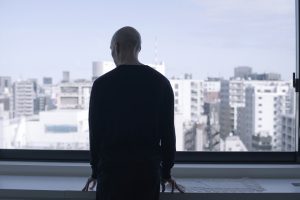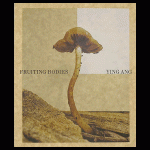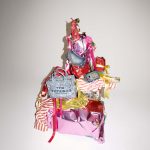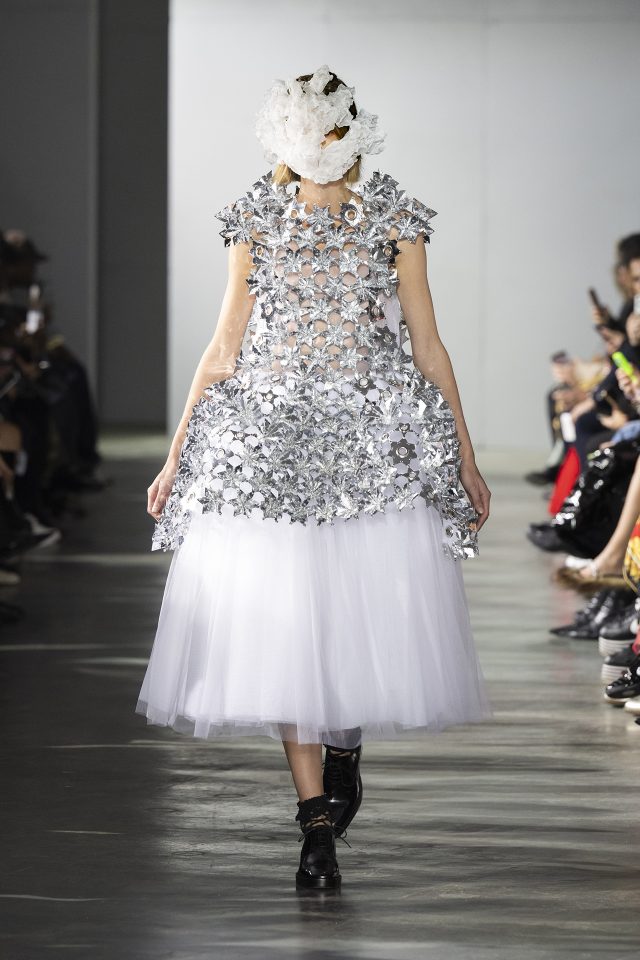クリエイティブディレクター伊藤直樹インタビュー
News
クリエイティブディレクター伊藤直樹インタビュー
Renowned Japanese Creative Director Naoki Ito
クリエイティブラボ「PARTY (パーティ)」のチーフ クリエイティブ オフィサー(CCO)を務める伊藤直樹。2011年には経産省「クールジャパン」クリエイティブディレクター、2011、2012年「クールジャパン官民有識者会議」のメンバーとしての活動の他、2012年4月には京都造形大学教授に就任するなど、現在の日本のクリエイティブシーンを牽引するひとりである。平日は東京、そして週末には京都と多忙なスケジュールのなか、現在のクリエイティブについて、そして彼ならではのファッション観についての話をきかせてもらった。
*You’ll find the English text after the Japanese.
クリエイティブラボ「PARTY (パーティ)」のチーフ クリエイティブ オフィサー(CCO)を務める伊藤直樹。2011年には経産省「クールジャパン」クリエイティブディレクター、2011、2012年「クールジャパン官民有識者会議」のメンバーとしての活動の他、2012年4月には京都造形大学教授に就任するなど、現在の日本のクリエイティブシーンを牽引するひとりである。平日は東京、そして週末には京都と多忙なスケジュールのなか、現在のクリエイティブについて、そして彼ならではのファッション観についての話をきかせてもらった。
—PARTYという会社について教えてください。
クリエイティブ・ラボという物語技術を研究する会社と言っているんですけど、デジタル・イノベーションの力を信じて広い意味でのストーリーテリングを、テクノロジーを通していろいろとデザインしていく。例えば、それは別に長い小説とか映画とかだけではなくて、コンビニに人が入ったときに“ピンポンピンポン”と音が鳴ると思うんですけど、その代わりになにがあったら人の行動が豊かになるのか?とか、そういうことも含めて広い意味でのストーリーテリングです。現在、社員は20名弱で、6月1日で設立してから1年が経ちました。
— 1年経ってなにか思うところってありますか?
自分たちがやりたいと手を挙げれば人って興味を持ってくれるんだなっていう風に思いました。自分たちがやりたい仕事というのは待っていても来ないので、自分たちがこういう集団を作ったということもひとつの意思表明だし、自分たちがこういうことやりたいっていう風に言うことも意思表明で、それがあることで仕事として依頼してくれる人が増えてきているという気がしています。そういう意味ではこのPARTYという徒党を組んだことというのはけっこうよかったなと思っています。組んでいなかったら仕事の質が全然違うと思います。
— PARTYを立ち上げて、クールジャパンもやって、今年の春から教授じゃないですか。伊藤さんの中でどういう風に使い分けているんですか?
自分の仕事の質的にも自分のいる場所的にも、ちょっと分散して生活をしたいというのがすごくあるんです。毎週あえて東京と京都を行き来することですごくヘルシーになれているし、逆に言うと2時間ちょっと移動しないといけないというこの制約が、すごくいい企画を練る時間なんです。これがリニア新幹線とかで1時間くらいに縮まっちゃったら逆にショックですね(笑)頭を切り替えるっていう意味での移動と、物理的に自分が2時間移動しなきゃいけないというのが、いいスイッチの切り替えになるのと、そこで考える時間ができるというのが自分的にはバランスが取れているんです。
—クールジャパンとPARTYと学校で仕事の違いを感じたりはしますか?
広くいうと変わらないですが、やはり日本は全然デザインが行き届いていないと思っています。よく例に出しているんですが、都会のマラソン大会はもう予約でいっぱいなので、いま地方のマラソン大会ってすごく流行ってきているじゃないですか。でもそのマラソン大会を主催している地方行政の人たちが作るポスターとかTシャツとかロゴとか正直まったくイケてないんですよ。そういうところにデザインの余地がいっぱいあるんですよね。
日本は資源がある国じゃないから石油もダイヤモンドも取れないわけじゃないですか。そうなったときに日本というのはクリエイティブな資源がけっこう重要だと思うんです。クリエイティブ経済というか。特にいま日本メーカーの生産拠点が全部海外にいっていますよね。そしてずっと僕らがなにもしなかったら子供たちの職場がどんどんなくなっていってしまうので、いま僕が働いている世界でデザインのニーズというのをもっと創出して新しい職業つくっていこうと思っているんですよ。京都造形芸術大学って美大の中では全国で一番就職率がいいそうなんですが、それでも60%くらいなんです。つまり美大生って就職率がすごく低いんです。やっぱり学校で習ったことがそのまま活かせる職業というのがそんなにないんですよね。
日本のデザインに対する考え方とかどうやったら変えられるかって思ったときに、僕ひとりじゃ厳しいですけどクールジャパンは国の制度のところから入っていけますよね。また大学はどちらかというと就職の面で新しいデザイナーたちが社会に流れ込んでくる水流の所に入っていける。そういう意味で、いまやっている生業と国と教育の現場という3つをおさえているんです。
—実際にどういうことを教えているんですか?
僕は普段やっているクリエイティブディレクターという職業のパフォーマンスをそのまま大学でやっています。自分のクリエイティブディレクションのやり方をそのまま学生に見せて、一緒にモノ作りをしています。そういう意味ではすごく実践的な人間を育てようとしているんです。
—いまのクリエイティブにおける海外と東京の違いで、なにか思うことってありますか?
京都に「エンボカ」っていうレストランがあるんですけど、古民家を改造しているんですよ。なんでかというと、その地域には景観条例があって看板もあまり出せないし、新しい家も簡単に建てられないから古い家をリノベーションするしかないみたいで。そういうのはパリとかと一緒なんですけど、やっぱり規制をかけることで新しいモノが生まれるというコトはあるなと思っています。東京みたいになんでもやっていいというのも新しいモノを生み出すひとつのやり方でもあるんですけど。規制をかけることで人間って工夫するんですよね。だから新しいことって0から自由にやっていいという東京型か、規制をかける京都型のどちらかだなと思っています。ポートランドとかサンフランシスコとかはどちらかというと京都に近いんです。いまは不景気というのもあるから、京都型のほうがいいかなと思っています。
—最近のクリエイティブの状況で気になることはありますか?
ポートランドに行ったときにも思ったんですけど、いまスモールコミュニティの時代にもう一度戻ってきているなという気がしているんです。ポイントはなにかというと、自転車や徒歩でうろちょろできるか。うろちょろすると知り合いに会ったりするわけですよ。そうするとそこで話してなにか起こったりするわけじゃないですか。そう考えると東京はやっぱり広すぎる。だからこのスモールコミュニティをもう一回再生することはクリエイティブとして考えたときにすごくおもしろいと思うんですよ。京都はけっこうスモールコミュニティを体現しているんですよね。道がフラットだから都心をほぼ自転車で行き来できるので、基本的には自転車でうろちょろしている人いっぱいいるんです。
都市というのは大きくなる運命なんです。大きくならなきゃいけないんだけど、小ささをどう保つかっていうのもけっこう大事かなと思います。街の作り方とか駅の作り方、コミュニティの作り方だとか、そういうことが今後問われていくような感じがします。
—伊藤さんのパーソナルな部分の話を聞きたいんですけど、どういう学生生活を送ってきたんですか?
早稲田大学に行ったのはマスコミの世界に入りたかったからなんです。法学部だったんですけど法律にはまったく興味がなかったので、大学では哲学とか心理学とか社会学の授業に出ていました。あとはモノ作りのほうにウェイトがありましたね。いろいろ興味はあったんですけど、当時やっていたのは映画です。映画のサークルに入って8mmや16mmを回して、そこで編集・カットしたり。イメージフォーラムにも通っていました。
あと僕らはインターネット第一世代なんで、当時は『WIRED(ワイアード)』を読みながら「インターネットってやべえ」ってずっと言っていました。あんなものを二十歳くらいのときに読まされたらやばいわけですよ。映像とインターネットっていうことがガチーンとハマって。これはなにか二つを融合してつくれるぞってそのときに確信したんです。それをずっとやってきたんですけど、2003~2004年ぐらいまで世の中の理解を得られなかった。ひとつはやっぱり常時接続じゃないので、そんな映像とかリッチなクリエイティブをインターネット上に載せて操作できるということが非現実的だったんですよ。それがADSLの出現以降一気にみんなが理解できるようになって、そしたらそこにやっぱり資本とかも集中してくるから、うまい循環が生まれはじめたんですよね。
そのちょっと前の2000年前後にITブームがあってインフラとかも整ってきて、ようやくクリエイティブとして花開くのが2002~2003年くらいからだと思います。僕は大学入ったのが95年だから8年くらいはずっと冷や飯ですよ(笑)自分たちがやりたいことを世の中に理解してもらえないし、予算も集まらないし。だから仕事としてもすごくすみっこなモノ。いまはどちらかというとそれがメインになっていますけど。
つまり物事って必ず端っこを通過してくるんじゃないですかね。いま端っこのモノは多分10年後になったらメインストリームになっている可能性だってある。僕はメインストリームをやりながら端っこをやっていきたい。そこにすごいニーズがあるというのがわかっているので。PARTYという会社もそういう隙間をやりたいんですよ。ただそれだけだとビジネスにならないので、うまいことそれを仕事にしていくために徒党を組んだし、自分たちでこういうのをやりたいって言っているのもありますね。
—影響を受けたアーティストとかはいたんですか?
そうですね、当然前田ジョンさんとかには影響を受けたし、映像でいうとNam June Paik (ナム・ジュン・パイク) とかね。あと坂本龍一さんが当時クリエイティブにおける権利の問題とか流通の問題とかにすごく意見をしていましたね。やっぱりインターネットっていうのはクリエイティブの表現を変えるけど、流通とか法律的な問題もすごくはらんじゃうわけなので。作り手からしたらやっぱりオープンソースで自由にやれたほうがいいんだけど、まだまだ権利で縛られてるとこもあったり。一回つくった人からするとお金を稼ぐために権利を守って欲しくなっちゃうんですよね。著作権は開けるとこを開けて閉めるとこを閉める。というその鍵の開け閉めがすごく大事なんです。それはモノ作りをやったことがないとわからないから、法律専門の人が単純に議論していてもこの鍵の微妙な開け閉めのバランスは見つけられないんですよね。
—こういうインターネットの世界で大事なことってどういうことですかね?
これだけ情報が流通しちゃう時代なんで、一番新しいことをやった者勝ちだなと。だから著作権とかもうあんまり関係ない。インターネットで簡単に調べられちゃうので、ある人がパクったとしてもそいつが叩かれるだけなんですよね。インターネットってそういう宿命にある。だからこのインターネット文化の時代、僕は誰よりも早くやりたい。それはもう当時から思っていました。いまでもそのいち早くやるためにはどうしたらいいか?ということをすごく感じていますし、逆に言うと厚顔無恥に知らなかったので結果的にパクリになっちゃいました、みたいなのは恥ずかしいことなのかなと思っています。だからいろいろ調べることがすごく大事ですね。
—ファッションの話もしたいんですけど。伊藤さんの好きなファッションとかってありますか?
ファッションは好きなんですよね。大学時代はこむずかしいことを考えていて、鷲田清一さんのモード論、衣服論などを読んでいました。自分の人生のモノ作りのテーマは身体なので、身体と服の関係がすごく気になります。いまは素材のよさとか縫製のよさとか、そういうことに興味がありますけど。NIKE(ナイキ)× Cole Haan(コールハーン)の革靴は本当にいまどきですよね。これはCole Haanの革靴のソールがNIKEになってるんですけど、これなら革靴で自転車に乗れちゃうんです。こういうのはいまの生活にすごくマッチしていると思いますよ。このタイミングでこれを出すっていうのはすごくカッコイイなって思う。NIKEのソールとCole Haanの革靴ってただの組み合わせ商品なんだけど、洋服におけるイノベーションは少しずつこういうところで起きてきていると思います。
—ファッションとインターネットの関係性でなにかおもしろいことはありますか?
ある種のオートクチュールが流行るんじゃないのかなって思うんです。Desertic(デザーティック)っていう僕の好きなブランドがあるんですけど、以前そこのHPにいきなりメールをして洋服作ってくれって無理なお願いをしたら作ってくれたんですよ (笑) いまってインターネットでデザイナーと直通になるんで、流通とか生産のあり方がけっこう変わっていくと思います。オートクチュールが民主化するというか、もともとは排他的な世界だったものがインターネットによって一気にちぢまって、僕みたいに直にデザイナーに連絡して洋服を作ってもらえるみたいなことが増えていくだろうし、そういうのをインターネット上で仕組み化するということもどんどん増えてくと思います。それによってインディーズ・ブランドがお客さんをそういう風にかかえてテーラーメイドみたいなことをやっていくスタイルというのができてくるんじゃないですかね。
僕はファッションに関しては、ファッションカタログを作るみたいなクリエイティブにも興味はあるけれど、どちらかというと流通とか生産とかを一緒に変えていくことをファッションの方々とやりたいですね。ファッションに興味があるが故に衰退して欲しくないし、いいブランドはいっぱいあるので、うまくがんばって欲しい。そのときに変わっていけることというのはきっとあるから、そこを僕らが一緒にファッション×インターネットってところでやりたいですよね。
—東京でオススメのショップを3つ教えてださい。
・旧山手通り
代官山蔦屋書店とかを含めた旧山手通りは建築家の槇文彦さんと朝倉家が作ったひとつの本当に素晴らしい作品なんで。
・砧公園
砧公園は広くて人が少ないんですよ。都会なのに自然が残っている広い公園としてすごく良質です。あんまり見られてない感じとかもあるので、芝生の上に上半身裸で寝ていてもなんにも恥ずかしくないですし。
・TODAY’S SPECAL
東京都目黒区自由が丘2-17-8
TEL: 03-5729-7131
営業時間: 11:00-21:00
URL: http://www.todaysspecial.jp
自由が丘に最近できました。すてきな食器とか扱っていて、カフェもすごくおいしい。
<プロフィール>
伊藤直樹(いとう・なおき)/PARTY。クリエイティブディレクター。静岡県生まれ。ADK、GT、ワイデン+ケネディトウキョウ代表を経て、2011年クリエイティブラボ「PARTY」を設立。チーフ クリエイティブ オフィサー(CCO)を務める。これまでにナイキ、グーグル、ソニーなど企業のクリエイティブディレクションを手がける。「経験の記憶」をよりどころにした「身体性」や「体験」を伴うコミュニケーションのデザインは大きな話題を呼び、国際的にも高い評価を得ている。これまでに国内外の150以上に及ぶデザイン賞・広告賞を受賞。カンヌ国際広告祭においては日本人受賞記録最多となる5つの金賞を含む14のライオン(賞)を獲得。相模ゴム工業「LOVE DISTANCE」では日本人として13年ぶりとなるフィルム部門での金賞を獲得。D&AD,NYADC,カンヌなど国内外の10以上のデザイン賞・広告賞で審査員を歴任。東京インタラクティブアドアワード(TIAA)2011,2012審査員長。ストックホルム、ロンドン、メキシコシティ、台北など海外での講演も多数。経産省「クールジャパン」(2011)クリエイティブディレクター。「クールジャパン官民有識者会議」メンバー(2011,2012)。京都造形芸術大学教授。
Creative Labo “PARTY” Chief Creative Officer (CCO) Naoki Ito. His background includes working as the Creative Director of the Ministry of Economy, Trade and Industry’s “Cool Japan” project since 2011; participation in the “Cool Japan Public-Private Expert Panel” in 2011 and 2012; and teaching at Kyoto University of Art and Design since 2012. He stands as one of the leaders of the creative scene in Japan. Amongst his busy schedule of weekdays in Tokyo and weekends in Kyoto, he made time to speak with us about current creative ventures in Japan and his outlook on fashion.
—Please tell me about your company “PARTY”.
It is part of a company called Creative Labo, which researches “story technology” and believes in the power of digital innovation to broaden the meaning of the word “storytelling” through creative designs. For example, they work around the idea that stories are not only told through lengthy novels and movies. That bell sound that goes off when you enter a store – they think about what they can replace that sound with to make people react differently. It’s a broad idea of storytelling that includes even those details. Currently, there are just under 20 people working at the company, and it just completed its first year since establishment on June 1st.
—What are your thoughts after the first year?
I feel that when we volunteer to be a part of something, people gain an interest in us. We can’t just wait around for the work we want to come knocking on our door, so we created this organization as a form of self-expression, and through it, the amount of work we have gotten has increased. It was great that we had this in mind when we put together this group called PARTY. If we had not done so, the quality of our work would have been completely different.
—Establishing PARTY, working with Cool Japan… and you’ve been a teacher since the spring of this year. How do you balance everything?
I do desire to somewhat separate my lifestyle based on the quality of my work and where I am at the time. I have gotten healthier by going back and forth between Tokyo and Kyoto every week, and the 2-hour transit offers an excellent chance for making plans and designs. I would probably take it as a shock if my travel time got cut in half by riding the Linear Shinkansen (bullet train). I think of the train ride as a transition for my mind. The physical task of a 2-hour train ride acts as a switch in my head, and the thinking space it gives me provides just the right balance of personal time.
—Do you feel differences in the way you work at Cool Japan, PARTY, and the university?
In a broad sense, there isn’t really a difference, but I feel that Japan is not attentive to design. I often use the example of marathons. Because registration always fills up for city marathons, rural competitions are gaining more popularity these days. But the local administrations that produce these marathons make posters and T-shirts that are honestly not very attractive. These are the kinds of places that we have room for design.
Japan is not a country with natural resources, so it’s not like we can mine for oil or diamonds. In such a case, I think Japan’s creative resources are pretty important. Creative economy, you might say. This is especially true as Japan’s points of production continue to move overseas. If we don’t do anything about it, there will not be any jobs left in the future for our children, so I think of my current work as creating new needs for design and thus new jobs in the field. Kyoto University of Art and Design supposedly has the lowest rate of joblessness among all of the art schools in the country, but even still, only 60% of students get jobs. This means that the likelihood of an art student getting a job is extremely low. In the end, there are not many workplaces that will allow them to use the skills they have learned in school.
When I considered what could be done to change people’s thinking about design in Japan, I realized that it was a difficult task to handle on my own, yet Cool Japan would allow me to tackle the issue through the government system. Also, working at the university allows me to be part of the current that takes new designers into the workforce. In these respects, I am combining my work in business and the government and education into one job.
—What kind of topics do you actually teach about?
I basically put on a performance of my regular job as a creative director, exactly how it is. I show students my method of creative direction, and we make things together. In this way, I am trying to raise students with practical abilities.
—Do you feel there are any differences between creative work overseas and in Tokyo?
There’s a restaurant in Kyoto called “enboca” in an renovated old Japanese-style house. This is because there are site restrictions in that area, which prevent them from putting up signs and building new houses. They apparently have no other option but renovation. They have these kinds of rules in places like Paris, as well. I believe that such restrictions give birth to new ideas. Of course, the “anything goes” mindset in Tokyo also provides another way to generate new concepts. Regulations make people use their brains. That’s why I believe that new things are born in one of two settings: an environment with creative freedom like that of Tokyo or a regulated environment like that of Kyoto. Places like Portland and San Francisco are closer to Kyoto in this sense. Taking the economic recession into consideration, I think I like the Kyoto style better.
—Is there something that interests you about the current state of creative work?
When I went to Portland, I got the feeling that the era of small communities is making a comeback. The base of this is that people are able to wander around on their bicycles and on foot. This means that they can wander around and run into people they know. And this will result in them talking and making something happen. When you think like this, Tokyo is just too big. That’s why thinking creatively about revitalizing small communities is really interesting in my opinion. Kyoto does a good job of embodying these small communities. The roads are flat, so you can pretty much ride to the heart of the city by bicycle, and there are a lot of people wandering around on bicycles.
Cities are destined to be big. The have to be big, but I feel that thinking about how to preserve the smallness is also important. How a town is built, and how a community is structured – I have a feeling that people will ask questions such as these from now on.
—This question is about your personal life, but what was your student life like?
I went to Waseda University because I wanted to enter the world of mass media. I majored in legal studies, but I wasn’t interested in law at all, so I took classes in subjects like philosophy, psychology and sociology. I also put a lot of weight on creative courses. I was interested in a variety of fields, but at the time, I was doing film. I joined the film club and would spin 8mm and 16mm reels, editing and cutting them. I was also attending Image Forum.
We were also the first Internet generation, so I would often read WIRED and talk about how “the Internet is awesome”. Reading that as a 20-year old was just amazing. I got totally obsessed with film and the Internet. I had confidence that I could make something by putting the two together. I’ve been working towards that ever since then, but it wasn’t until about 2003-2004 that I could get others to embrace the concept. Prior to that, we didn’t yet have regular connections, so manipulating highly creative media like film was not realistic at the time. But upon the emergence of ADSL, people suddenly understood what I trying to do. They then began investing capital into the idea, and a good cycle began to form.
The IT boom took place just before that around the year 2000, and online infrastructure was getting into place, so I think that, as a creative, I could finally blossom around 2002-2003. I started university in ’95, so I was living off of frozen food and rice for 8 years! We couldn’t get others to understand what we wanted to do, and we couldn’t gather enough capital to do it. So it was only a tiny part of the work I did. Now, it’s more like the main focus of my work.
I guess it means that everything is at an edge at some point. Things that are out on the sidelines now may very well be part of the mainstream ten years down the road. While working with the mainstream, I want to tap into those edges. Because I know there are great needs there. I want to fill in those gaps with my company PARTY. However, we can’t make a living just by filling holes, so we have put together a team that can effectively turn those gaps into work, and we are also talking about other projects that we want to take on.
—Were there any artists that influenced you?
Yes, in fact, John Maeda influenced me greatly, and in regards to film, I drew inspiration from Nam June Paik. Also, Mr. Ryuichi Sakamoto was at the time was highly outspoken about issues relating to the copyright laws and distribution of creative works. After all, the Internet alters creative expression, so distribution and other legal issues come heavily into play. From a creative perspective, open source is great, because it gives you the freedom to use things as you please, but there are still a number of rights restrictions. It makes sense that originator of a work would want to protect the rights in order to make a living. People who want open copyrights should open them; people who want closed copyrights should close them. But the key to opening and closing these rights is what is most important. If you haven’t worked in creation, you don’t really understand how this key works, and even after having legal experts explain it to you, it’s difficult to find the balance between opening and closing that door.
—In this Internet age, what do you feel is really important?
In a time period in which information spreads this quickly, the person with the newest idea will come out on top. Copyrights don’t matter that much in the end. You can look anything up online, so even if somebody did steal your work, he or she would just end up getting attacked by the Internet community for doing so. That’s why I want to do things before other people in this era of Internet culture. I was thinking that from the beginning. But what can you do to be earlier than other people nowadays? That’s a big question I have been feeling. And then I’ve thought of the flipside of whether it would be shameful if you made something unknowingly, and as a result [of preexisting rights to that idea] it was considered stealing. That’s why I think that doing a wide variety of research is really important.
—I would also like to discuss fashion. Is there any fashion that you like?
I like fashion. During my college life, I always thought about difficult things, and I read titles like Kiyokazu Washida’s Theory of Mode and Theory of Clothing. The theme of creation in my own life is the human body, so I was really interested in the relationship between the human body and clothing. Nowadays, I am more interested in fabric and stitch quality, though. The collaboration shoes by NIKE and Cole Haan are really happening for me right now. They are basically Cole Haan leather shoes with NIKE soles; you can even ride a bicycle in them. They really match my current lifestyle. I think it’s really cool that they released these shoes at this timing. Putting together a NIKE sole and Cole Haan leather shoe is just an obvious pairing of two products, but I believe that innovations in apparel and happening little by little in these kinds of areas.
—Is there anything interesting about the relationship between fashion and the Internet?
I think that some form of haute couture will become more popular. There’s a brand I like called Desertic; one time, I emailed the brand through its website and asked them to make clothes for me out of the blue. And they did. The Internet gives us direct connections to designers, so I believe that our methods of distribution and production will continue to change significantly. Maybe it’s the democratization of haute couture. Or perhaps you might say that the formerly exclusive world has been minimized, and people like me who get in direct contact with designers and have clothes custom-made will probably increase, and that process will increasingly be standardized over the Internet. This style of getting tailor-made work is how many independent brands have been gaining customers.
As far as I am concerned, of course I am interested in creative aspects like designing fashion catalogs, but what I really want to do is work with people in the fashion industry to transform methods of distribution and production. I am really interested in fashion. I don’t want it to face decline, and there are a lot of great brands out there, so I want them to do their best and make it. There is definitely a way to change with the times, so we want to work to connect fashion and the Internet.
—What are three shops you recommend in Tokyo?
Kyuu Yamate Street
Kyuu Yamate Street, which includes the Daikanyama Tsutaya Book Store, is an amazing work of art designed by architects Fumihiko Maki and the Asakuras.
Kinuta Park
Kinuta Park is spacious and doesn’t have many visitors. It is spacious and has plenty of nature, even though it is a city park. Maybe it is because the park gives me a feeling like nobody can see me, but I wouldn’t even feel embarrassed going there and sleeping on the grass shirtless.
TODAY’S SPECIAL
Address: 2-17-8 Jiyugaoka, Meguro-ku Tokyo
TEL: 03-5729-7131
OPEN: 11:00-21:00
This shop opened recently in Jiyugaoka. The tableware is beautiful, and the coffee is delicious.
<Profile>
Naoki Ito / PARTY / Creative Director. Born in Shizuoka Prefecture. After working with top names such as ADK and GT Tokyo, and as an executive at Wieden+Kennedy, Ito established Creative Labo “PARTY” in 2011, where he works as the Chief Creative Officer (CCO). Up until now, he has had a hand in the creative direction at Nike, Google, Sony and many other major companies. His communication design solution entitled “Record of Experiences”, which is founded on the concepts of physicality and experimentation, drew massive public attention and gained high regards internationally. He has received over 150 awards both domestically and abroad for design and advertising. He has received more awards in the Cannes Lions Creativity Festival than any other Japanese person, including 5 Gold Awards and 14 Lions. Ito was the first Japanese person in 13 years to receive a Gold Award in the film category with his production for Sagami Condoms entitled “LOVE DISTANCE”. He has also served as a judge for over 10 design and advertising competitions around the world, including D&AD, NYADC and Cannes. He headed judging for the Tokyo Interactive Ad Awards (TIAA) in 2011 and 2012. Ito has also lectured in Stockholm, London, Mexico City, Taipei, and numerous other international locations. In 2011, he came on as the Creative Director of METI’s Cool Japan project, and he has participated as a member of the Cool Japan Public-Private Expert Panel in 2011 and 2012. He is a professor at Kyoto University of Art and Design.











